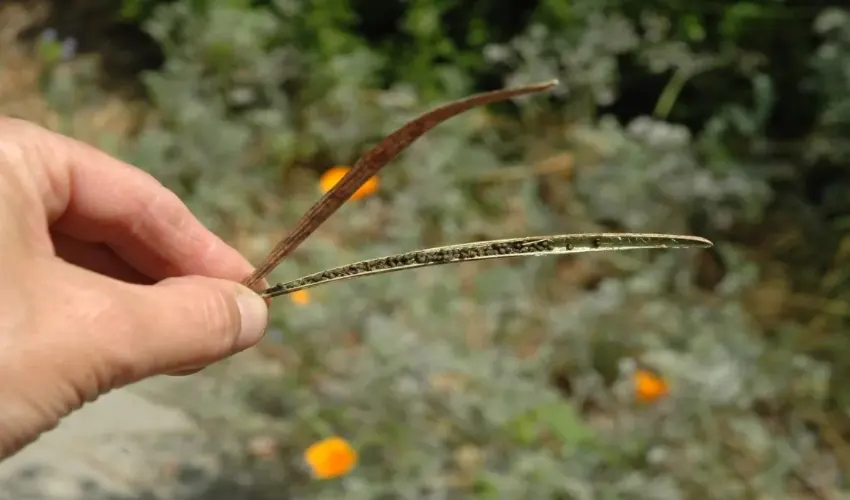Natural dyeing is a sustainable and creative way to add beautiful, earthy tones to fabrics and materials. Poppy pods, often overlooked, are a fantastic source of natural dye, offering a range of soft, warm hues. In this article, we’ll explore how to use poppy pods in natural dyeing, including the preparation process, techniques, and tips for the best results.
What Are Poppy Pods?
Poppy pods are the seed pods of the poppy flower, typically from the Papaver somniferum variety, which is the same poppy plant used for ornamental, culinary, and medicinal purposes. After the flowers bloom and the petals fall off, the pods remain, holding the seeds. These pods contain natural pigments that can be extracted and used to dye fibers, offering a rich color palette, often in shades of pink, red, purple, and brown.
Benefits of Using Poppy Pods in Natural Dyeing
- Eco-Friendly: Using poppy pods in natural dyeing is a sustainable practice, as it involves minimal chemicals and synthetic dyes.
- Unique Tones: Poppy pods create soft, organic hues that can’t be replicated by synthetic dyes. The colors are often subtle and earthy, making them ideal for a range of DIY projects.
- Abundant Resource: Poppy pods are widely available, especially in areas where poppy plants are cultivated for ornamental purposes.
Preparing Poppy Pods for Dyeing
Before you can use Dried poppy pods for sale in dyeing, you need to prepare them properly. Here’s a step-by-step guide:
- Harvest the Pods: Collect dried poppy pods after the flower petals have fallen off. You can use either fresh or dried pods, but dried pods tend to release color more efficiently.
- Break the Pods: Gently break the pods open to expose the seeds. You don’t need to remove all the seeds, but it helps to break them open so that the color extracts more easily.
- Prepare the Dye Bath:
- Water: Start by filling a large pot with water. The amount of water you need depends on the quantity of fabric you plan to dye. Generally, you’ll want enough water to fully submerge your fabric.
- Add Poppy Pods: Add the broken poppy pods to the pot. For a rich color, you can add 1-2 pods for every cup of water.
- Boil and Simmer: Bring the water to a boil, then reduce to a simmer. Let the pods simmer for about 30 minutes to an hour. The longer you simmer, the more intense the color will be.
Dyeing with Poppy Pods
Once your dye bath is ready, it’s time to dye your fabric or other materials. Follow these steps for the best results:
- Prepare Your Fabric: It’s important to pre-treat the fabric before dyeing. Natural fibers such as cotton, linen, wool, and silk absorb dye more effectively than synthetic fabrics.
- Mordanting: Before dyeing, you may need to mordant your fabric. A mordant helps the dye bond to the fibers and enhances the color. Common mordants for natural dyes include alum or iron. Soak your fabric in a mordant solution for at least 30 minutes before dyeing.
- Soak the Fabric: After mordanting, soak your fabric in warm water. This helps it absorb the dye evenly.
- Dye the Fabric: Submerge the fabric in the poppy pod dye bath. Stir the fabric gently to ensure even coverage. The color will develop quickly, but you can leave the fabric in the dye for longer for a deeper shade.
- Rinse and Dry: Once you’re satisfied with the color, remove the fabric from the dye bath and rinse it under cold water until the water runs clear. Hang the fabric to dry away from direct sunlight to preserve the color.
Tips for Using Poppy Pods in Natural Dyeing
- Experiment with Different Fabric Types: Different fabrics will take on different tones, so it’s worth experimenting with various fibers to see how they absorb the dye.
- Layering Colors: You can create more complex hues by layering dyes. For example, you could dye a piece of fabric with poppy pods and then over-dye it with another natural dye like indigo for a unique result.
- Color Variations: The final color may vary depending on the pH of your water and the mordant used. To achieve a range of shades, you can adjust the pH by adding an acid like vinegar or a base like baking soda to the dye bath.
- Strain the Dye: Before dyeing, it’s a good idea to strain the dye bath to remove any large pieces of pod that may clog the fabric or affect the final color.
Conclusion
Using poppy pods in natural dyeing is a simple, eco-friendly way to achieve beautiful, soft, and organic hues. With a little preparation and care, you can transform plain fabrics into stunning, one-of-a-kind creations. Whether you’re dyeing fabrics for clothing, home decor, or crafting projects, poppy pods offer a versatile and sustainable option that will add a unique touch to your work.
Try experimenting with different techniques and colors, and enjoy the process of creating natural art with poppy pods!
